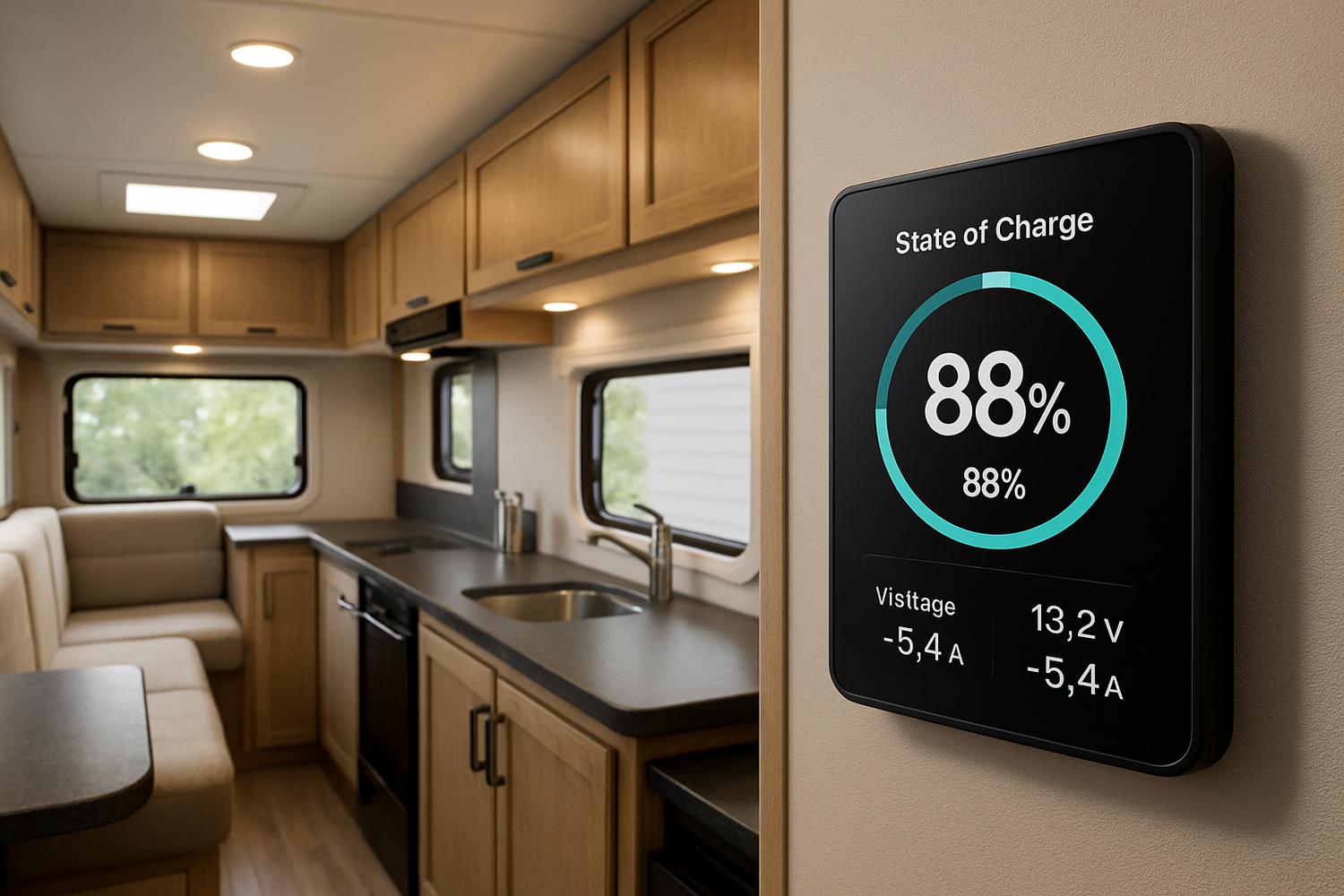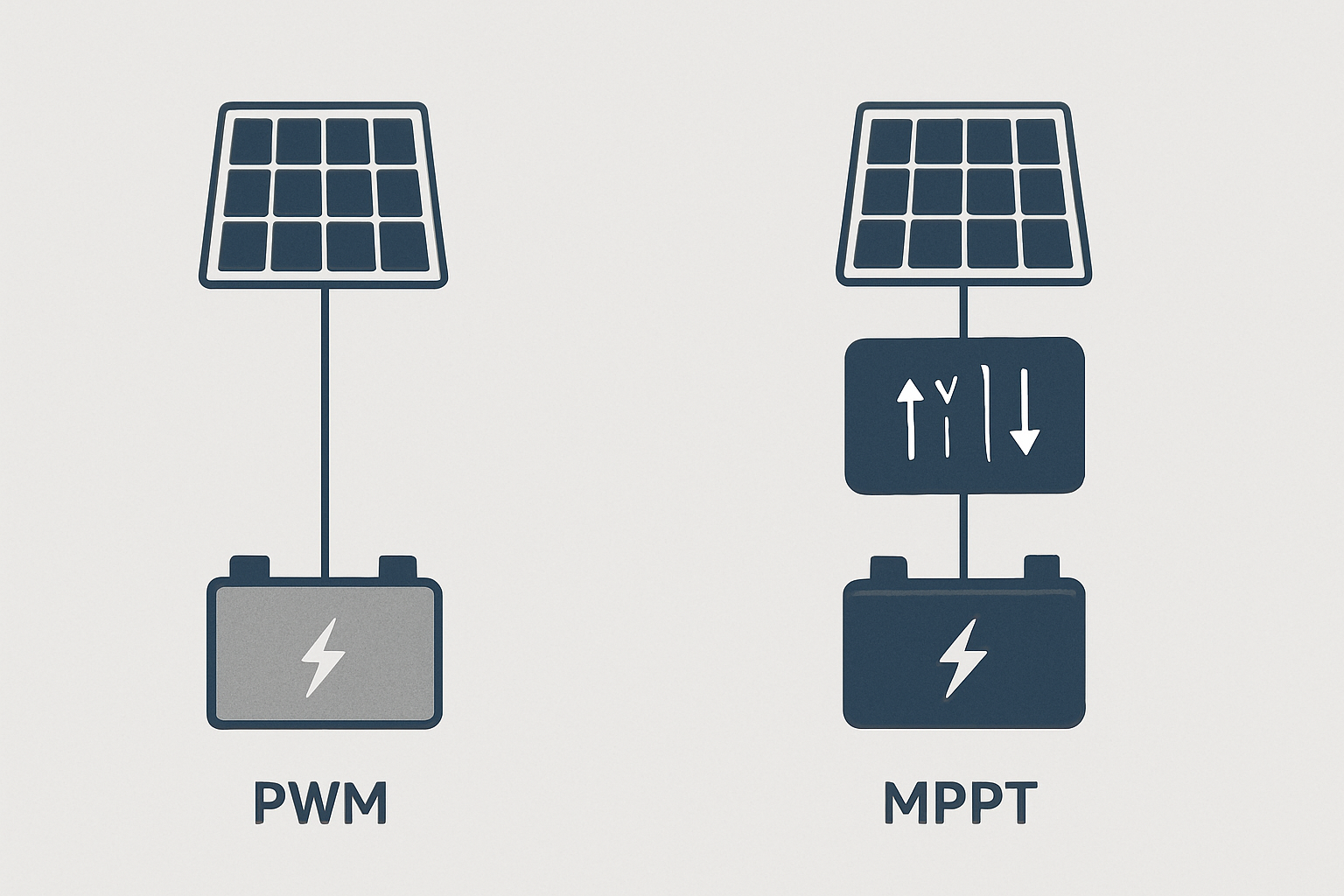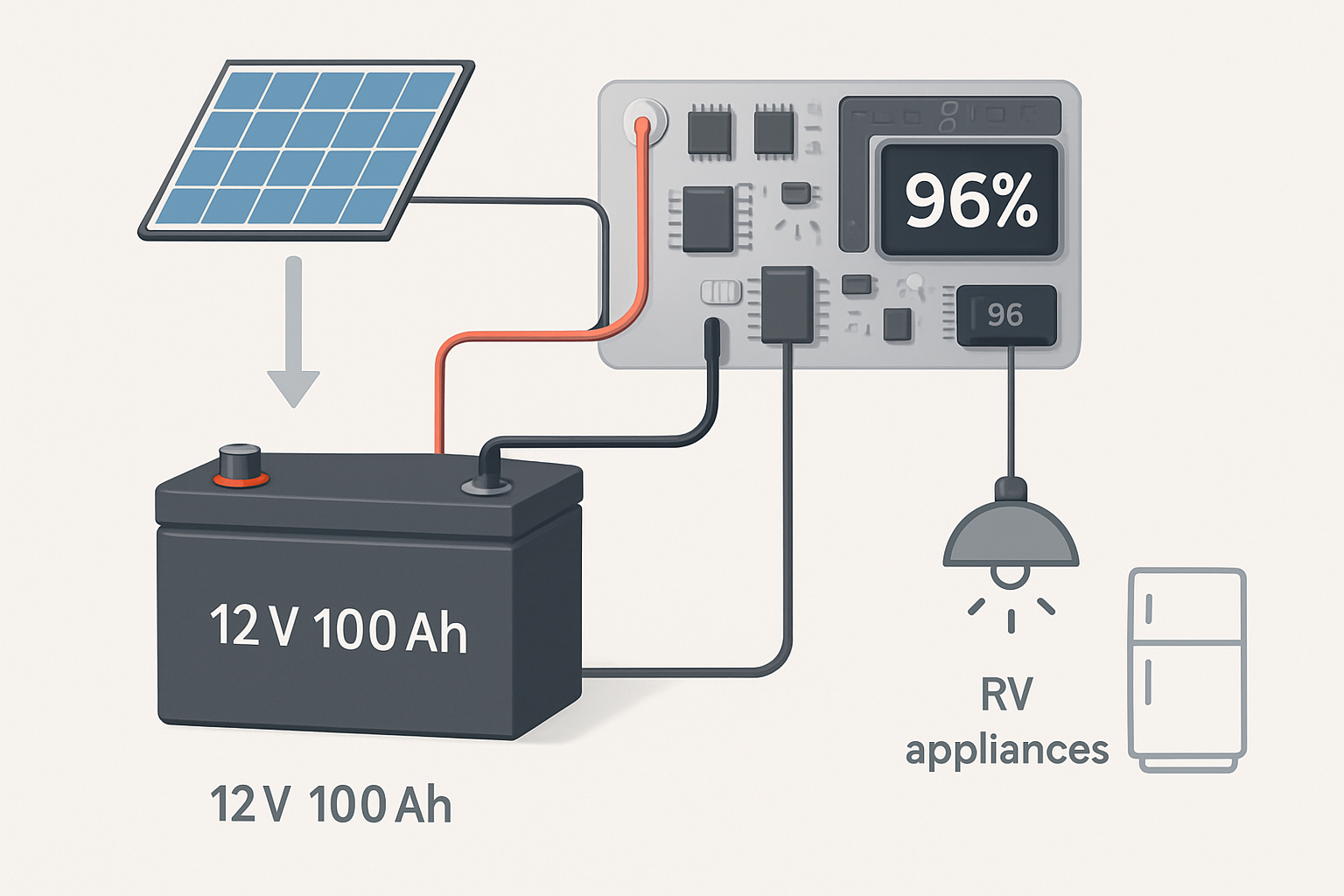Owning a deep cycle lithium battery for your RV is a significant step toward energy independence. These power systems, particularly those using Lithium Iron Phosphate (LiFePO4) chemistry, offer remarkable performance and longevity. To get the most from your investment, you need to monitor its performance. Tracking specific metrics provides a clear picture of your power consumption, available energy, and the battery's overall condition. This information empowers you to manage your energy usage effectively and ensure your system operates reliably for years.
Foundational Metrics: Voltage and State of Charge (SoC)
These two metrics provide the most immediate information about your battery's status. They are the first things you will check to assess your available power.
Understanding Voltage Levels
Voltage (V) is the electrical potential of your battery. In a LiFePO4 battery, the voltage curve is quite flat, which means it remains relatively constant through most of the discharge cycle. It will sit steadily around 13.0V to 13.2V for much of its use. While it is not a precise gauge of remaining capacity on its own, monitoring voltage is crucial for identifying the upper and lower limits. A sharp drop in voltage indicates the battery is nearly depleted, and a high voltage reading confirms it is fully charged. Your Battery Management System (BMS) uses these voltage thresholds to protect the cells from overcharging or over-discharging.
The Importance of State of Charge (SoC)
State of Charge (SoC) is the equivalent of a fuel gauge for your battery, expressed as a percentage. An SoC of 100% means the battery is full, while 20% indicates it's nearing depletion. For accurate RV battery monitoring, SoC is the most vital metric for daily energy management. Unlike voltage, it gives you a direct and easy-to-read measurement of how much energy you have left. This allows you to make informed decisions, such as whether to run a high-power appliance or conserve energy until you can recharge.
Performance and Consumption Indicators
These indicators show how you are using your power in real-time. They are essential for understanding your consumption habits and optimizing your energy system.
Current Flow (Amperage)
Current, measured in Amperes (A), represents the rate at which electricity is flowing. A positive value typically indicates current flowing into the battery (charging), while a negative value shows current flowing out (discharging). Monitoring the amperage helps you see exactly how much power each appliance draws. For example, you might see a small draw from your lights but a very large one when the microwave is running. This real-time feedback is invaluable for identifying power-hungry devices and managing your load.
Power Draw (Wattage)
Power, measured in Watts (W), gives you a complete picture of your total energy consumption at any moment. It is calculated by multiplying voltage by amperage (Watts = Volts x Amps). If you are running multiple appliances, the wattage reading shows their combined power draw. This metric is one of the most practical lithium battery performance indicators for managing your total system load and ensuring you do not exceed the capabilities of your inverter or battery.
Long-Term Health and Efficiency Metrics
While daily performance is important, tracking long-term health ensures your battery serves you well for its entire expected lifespan. These metrics provide insight into the battery's condition over months and years.
State of Health (SoH)
State of Health (SoH) is a measurement of a battery's condition compared to its original specifications. A brand-new battery has an SoH of 100%. Over time, as the battery is used, its ability to hold a full charge diminishes slightly, and its SoH decreases. For LiFePO4 batteries, this degradation is very slow. Factors like high temperatures, deep discharges, and extremely high charge/discharge rates can accelerate it. Tracking SoH offers a long-term perspective on your battery's lifespan, helping you anticipate its future performance.
Cycle Count
A charge cycle is one full discharge and recharge of the battery. For instance, discharging a battery to 50% and then recharging it to 100% twice would equal one cycle. LiFePO4 batteries are known for their high cycle counts, often capable of delivering several thousand cycles while retaining a high percentage of their original capacity. Keeping an eye on the cycle count provides a benchmark for your battery's usage history and helps you gauge how much life it has left based on the manufacturer's specifications.
Integrating Metrics for Smart Energy Management
Understanding these individual metrics is the first step. The next is using them together for intelligent energy management for RVs. A quality battery monitor is the tool that brings all this data together in one place.
The Role of a Battery Monitor
An external, shunt-based battery monitor is the most effective tool for battery health tracking in an RV. It installs on the negative battery cable and precisely measures all energy moving in and out of your system. This provides highly accurate readings for SoC, amperage, and other key metrics, far surpassing what can be estimated from voltage alone. This central hub of information is what enables you to create a functional energy budget, troubleshoot issues, and gain complete confidence in your power system.
Creating a Daily Energy Budget
With accurate data from your monitor, you can perform an energy audit. Note the power draw (Watts) of your common appliances and how long you use them. This allows you to calculate your total daily energy consumption in Amp-hours (Ah) or Watt-hours (Wh). Once you know your typical usage, you can compare it against your battery's capacity and solar generation potential. This practice helps prevent unexpected power shortages and ensures you have enough energy stored for your needs, especially on cloudy days.
A Look at the Broader Energy Landscape
The technology behind RV batteries is part of a much larger global shift in energy. Investment in battery storage is growing rapidly as it becomes a critical component for grid stability and renewable energy integration. According to the IEA's World Energy Investment 2023 report, global spending on battery storage more than doubled in 2022. This massive investment fuels innovation and improves manufacturing efficiency. The revenue for top battery manufacturing firms has surged, indicating a healthy and expanding market, as noted in the Advancing Clean Technology Manufacturing analysis. These trends ultimately lead to more powerful, reliable, and accessible energy storage solutions for applications of all sizes, from utility grids to your RV. The complexity of assessing storage costs, as highlighted by IRENA's Renewable Power Generation Costs in 2024, also underscores why diligent monitoring of individual systems is so important to verify their economic and operational performance.
Maximizing Your Investment
Your deep cycle lithium battery is the heart of your RV's electrical system. By consistently monitoring these seven key metrics, you move from being a passive energy user to an active energy manager. This proactive approach not only protects your investment but also enhances your travel experiences by providing a reliable and predictable source of power. You gain the freedom to travel further and stay off-grid longer with full confidence in your energy system. For a deeper look into how these metrics contribute to overall system efficiency, the ultimate reference on solar storage performance provides detailed comparisons and benchmarks.
Frequently Asked Questions
How often should I check my battery metrics?
It is good practice to glance at your battery monitor daily to check the State of Charge (SoC). This will help you stay aware of your power situation. A more detailed look at consumption (Amps/Watts) is useful when you are running appliances or want to understand your usage patterns better. Long-term metrics like SoH and cycle count can be checked less frequently, perhaps monthly or quarterly.
What is the most important metric to watch?
For day-to-day use, the State of Charge (SoC) is the most critical metric. It tells you exactly how much 'fuel' is left in your tank. For long-term battery health, State of Health (SoH) is arguably the most important, as it indicates the battery's overall condition and aging process.
Can I rely solely on the built-in BMS for monitoring?
A Battery Management System (BMS) is a vital safety component that protects the battery from operational extremes like over-voltage or under-temperature. However, it is not designed to be a user-facing monitoring tool. For accurate, detailed metrics like SoC and real-time power draw, a dedicated external battery monitor with a shunt is highly recommended.
Does temperature affect these metrics?
Yes, temperature can impact battery performance. Extremely cold temperatures can temporarily reduce a battery's available capacity and ability to accept a charge, while very high temperatures can accelerate degradation and reduce its long-term lifespan. Many advanced battery monitors include a temperature sensor to help you track this.





Leave a comment
All comments are moderated before being published.
This site is protected by hCaptcha and the hCaptcha Privacy Policy and Terms of Service apply.